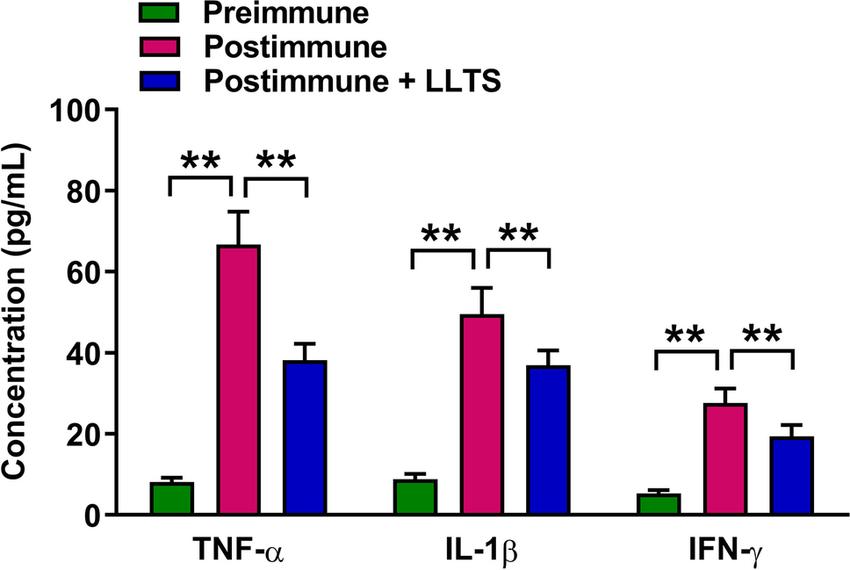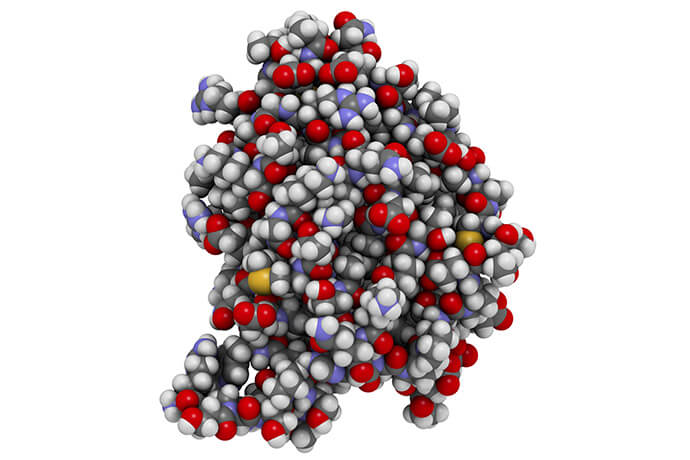What are Cytokines?
Cytokines are a diverse group of small proteins that serve as indispensable signaling molecules in the immune system. They orchestrate the cellular responses required to combat infections, regulate inflammation, and maintain tissue homeostasis. Cytokines act as messengers, conveying instructions between immune cells, thus enabling coordination in the body's defense mechanisms. Their importance is underscored by their involvement in both innate and adaptive immunity, where they bridge the gap between rapid but non-specific responses and specific, memory-based reactions.
Cytokines in Rabbits
The choice to study cytokines in rabbits is not arbitrary; these animals have emerged as valuable model organisms for investigating immune responses. Their physiology closely mirrors that of other mammals, making them suitable subjects for immunological research. Comparatively little is known about rabbit cytokines, making them an intriguing avenue for exploration. By deciphering the similarities and differences between rabbit cytokines and those of other species, we can glean insights into both their uniqueness and their shared functions in immunity.

Types of Rabbit Cytokines
Rabbit cytokines encompass a diverse array of proteins, each with distinct roles in immune regulation. These cytokines can be broadly categorized into pro-inflammatory and anti-inflammatory types, each playing a crucial role in the immune response.
Pro-Inflammatory Cytokines: Pro-inflammatory cytokines in rabbits, such as interleukin-1β (IL-1β) and tumor necrosis factor-α (TNF-α), serve as the initial responders during infections or tissue injury. They play a central role in promoting inflammation, activating immune cells, and recruiting neutrophils and macrophages to the site of infection. Pro-inflammatory cytokines are essential for the rapid containment of pathogens and initiating the immune response.
Anti-Inflammatory Cytokines: On the other hand, anti-inflammatory cytokines like interleukin-10 (IL-10) act as regulators of the immune response. They help maintain immune homeostasis by dampening excessive inflammation, preventing collateral tissue damage, and promoting tissue repair. In rabbits, IL-10, for example, has a crucial role in limiting the immune response after the pathogen has been cleared, preventing chronic inflammation.
 Serum levels of inflammatory cytokines in the rabbit (Deng et al., 2023).
Serum levels of inflammatory cytokines in the rabbit (Deng et al., 2023).
Functions of Rabbit Cytokines
Rabbit cytokines exhibit a wide range of functions that contribute to immune system orchestration and overall host defense:
Immune Cell Activation: Pro-inflammatory cytokines activate immune cells such as neutrophils, macrophages, and natural killer cells. For example, IL-1β activates macrophages, promoting their phagocytic activity and antigen presentation.
T Cell Differentiation: Cytokines like interleukin-12 (IL-12) guide the differentiation of T helper cells into specific subsets. IL-12 promotes the development of Th1 cells, which are essential for cell-mediated immunity and the clearance of intracellular pathogens.
Antibody Production: Some cytokines, including interleukin-4 (IL-4) and interleukin-5 (IL-5), play a role in the production of antibodies by B cells. IL-4, for instance, is critical for class-switching and antibody affinity maturation.
Immune Memory: Cytokines also contribute to the establishment of immunological memory. Memory T cells and B cells are formed in response to cytokine signals, ensuring a quicker and more robust response upon re-exposure to the same pathogen.
Regulation of Cytokine Expression
The expression of cytokines in rabbits is subject to tight regulation to prevent excessive inflammation and maintain immune balance:
Stimuli Triggering Cytokine Production: Cytokine production is initiated by various stimuli, including pathogen-associated molecular patterns (PAMPs) and danger-associated molecular patterns (DAMPs). These molecular signals are recognized by pattern recognition receptors (PRRs) on immune cells.
Signaling Pathways: Once the stimuli are detected, signaling pathways such as the JAK-STAT pathway are activated. This cascade of events culminates in the transcription and release of specific cytokines.
Balancing Act: Maintaining the balance between pro-inflammatory and anti-inflammatory cytokines is crucial. Excessive pro-inflammatory cytokine production can lead to tissue damage, while excessive anti-inflammatory cytokine production may result in immune suppression, making the host vulnerable to infections.
Select Service
Cytokines and Rabbit Health
Cytokines play a fundamental role in maintaining rabbit health by orchestrating immune responses against infections. They serve as messengers that facilitate communication between immune cells, ensuring coordinated efforts to combat pathogens. An effective cytokine response is indispensable for rabbit health, enabling the timely clearance of infections and the restoration of homeostasis.
However, dysregulation of cytokines can have adverse consequences for rabbits. When cytokines are imbalanced or excessively produced, it can lead to immune-related disorders and chronic inflammation. For instance, an overproduction of pro-inflammatory cytokines, such as interleukin-1β (IL-1β) and tumor necrosis factor-α (TNF-α), can result in conditions like rabbit snuffles. Rabbit snuffles is characterized by chronic upper respiratory inflammation, which can significantly affect the rabbit's health.
To illustrate the significance of studying rabbit cytokines, consider the following examples of diseases and conditions:
Rabbit Hemorrhagic Disease (RHD): Understanding rabbit cytokines is pivotal in comprehending the immune response to RHD, a highly contagious viral disease. Cytokine research can contribute to the development of effective vaccines and treatments, thereby mitigating the impact of RHD on rabbit populations.
Respiratory Diseases: Upper respiratory infections are common in rabbits and can have a severe impact on their health. Investigating cytokine responses in these infections is crucial for developing targeted therapies and preventing complications.
Gastrointestinal Disorders: Gastrointestinal disorders, including enteritis, pose a substantial threat to rabbit health. Cytokine regulation is vital in maintaining gut health. An understanding of the role of cytokines in these disorders can inform dietary and therapeutic interventions, improving rabbit well-being.
Research Applications
The study of rabbit cytokines holds immense potential with far-reaching applications in various fields.
Veterinary Medicine
Vaccine Development: Understanding rabbit cytokines is instrumental in the development of vaccines tailored to specific rabbit pathogens. This knowledge allows for the design of vaccines that elicit optimal immune responses, improving protection against diseases such as Rabbit Hemorrhagic Disease (RHD) and myxomatosis.
Treatment of Infections: Cytokine-based therapies can be explored for treating infections in rabbits. Modulating cytokine expression can enhance the host's ability to combat specific diseases, offering potential treatments for conditions like rabbit respiratory infections.
Immunology
Comparative Immunology: Rabbit cytokines provide valuable comparative data in immunology research. Comparing cytokine responses in rabbits to those in other species can reveal evolutionary insights into immune system functioning. This comparative approach can lead to a better understanding of immunological processes across diverse species.
Immune Modulation: Insights into cytokine regulation can pave the way for the development of immunomodulatory drugs. Such drugs can be applied not only in rabbits but also in other species, including humans. This has the potential to revolutionize the treatment of various immune-related disorders.
Rabbit Husbandry
Optimizing Rabbit Health: Knowledge of cytokines can be applied to optimize rabbit husbandry practices. Proper nutrition and environmental conditions can influence cytokine balance, contributing to overall rabbit health and welfare. This is particularly important in commercial rabbit farming.
Breeding and Genetics: Cytokine studies can inform breeding programs aimed at enhancing disease resistance in rabbit populations. By selectively breeding rabbits with favorable cytokine profiles, breeders can produce more robust and disease-resistant stock, improving the sustainability of rabbit farming.
Methods of Cytokine Detection in Rabbits
Detecting and quantifying cytokines in rabbit samples is crucial for understanding the immune response and various physiological processes. One powerful and versatile method for this purpose is the Luminex Multiplex Assay. This technique allows for the simultaneous measurement of multiple cytokines in a single sample, providing a comprehensive view of the immune profile. The Luminex system is based on the principles of flow cytometry and utilizes microspheres or beads, each with a unique fluorescent signature corresponding to a specific cytokine. The steps involved in Luminex-based cytokine detection include:
1. Sample Preparation:
Before performing the assay, rabbit samples such as serum, plasma, or tissue homogenates need to be collected and prepared. This includes proper storage, centrifugation, and dilution to ensure accurate results.
2. Immunoassay Kit Selection:
Choose a Luminex-based immunoassay kit that includes antibodies specific to the rabbit cytokines of interest. These kits typically consist of color-coded beads, detection antibodies, and standards. Ensure the kit is compatible with rabbit samples.
3. Bead Incubation:
Mix the prepared samples with the bead mixture containing antibodies conjugated to distinct fluorescent microspheres. Each bead is coated with a capture antibody specific to a particular cytokine.
4. Cytokine Binding:
Allow the samples to incubate with the bead mixture. During this phase, cytokines in the samples bind to the specific capture antibodies on the microspheres.
5. Detection Antibody Incubation:
After washing to remove unbound substances, add a biotinylated detection antibody that binds to the captured cytokines. These antibodies are also specific to the target cytokines.
6. Streptavidin-Phycoerythrin (SA-PE) Addition:
Introduce SA-PE, which binds to the biotinylated detection antibodies. This step allows for the quantification of cytokine-bound microspheres based on fluorescence intensity.
7. Luminex Instrumentation:
The bead-cytokine complexes are then passed through a Luminex instrument, which identifies the individual beads by their fluorescent signature and measures the amount of SA-PE fluorescence associated with each bead. This information corresponds to the concentration of the respective cytokines in the sample.
8. Data Analysis:
Data analysis software is used to calculate the concentration of cytokines in the samples based on the fluorescence signals. Standard curves generated from known cytokine concentrations are used to convert fluorescence intensity into cytokine concentration.
Advantages of Luminex Multiplex Assay
High Throughput: Simultaneous measurement of multiple cytokines in a single sample saves time and resources.
Sensitivity: Luminex offers excellent sensitivity, enabling the detection of low cytokine concentrations.
Small Sample Volume: It requires only small volumes of sample, making it suitable for limited sample availability.
Customization: Kits can be customized to measure specific cytokines relevant to rabbit immune responses.
Accuracy: Luminex technology provides accurate and reliable results.
Reference:
- Deng, Jielin, et al. "Transcutaneous vagus nerve stimulation attenuates autoantibody-mediated cardiovagal dysfunction and inflammation in a rabbit model of postural tachycardia syndrome." Journal of Interventional Cardiac Electrophysiology 66.2 (2023): 291-300.





